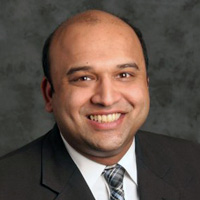6 Ways to Limit Health Care Costs
Living longer is nice, but paying more for health care isn’t. There are, however, a few strategies you can consider to help limit those rising costs.


Health care costs have been rising. Part of the reason could be an increased reliance on emergency care, but a lot of it could be chalked up to an aging population. People have a better chance of getting a disease or ailment the longer that they live. In 1960, newborns in the U.S. could expect to live slightly more than 71 years. Now they can expect to live just under 79 years.
Here are six ways to help you navigate the health care cost maze and potentially save:
1. Coordinate plans
Two-income couples should coordinate their insurance benefits. It might make sense to opt out of one plan and choose the family option on another. On the other hand, maintaining coverage with two providers can make sense, if one fills the gaps of the other. For example, one spouse may have better options for prescriptions, a lower deductible or a wider network of physicians. Then, the other may be able to take the insurance benefit as a lump sum benefit. A growing number of employers are offering a “cash in lieu of” or “pay in lieu of” benefits option, under which the employer offers a taxable “opt out” amount if an employee declines coverage because they’re covered under their spouse’s health plan.
From just $107.88 $24.99 for Kiplinger Personal Finance
Become a smarter, better informed investor. Subscribe from just $107.88 $24.99, plus get up to 4 Special Issues

Sign up for Kiplinger’s Free Newsletters
Profit and prosper with the best of expert advice on investing, taxes, retirement, personal finance and more - straight to your e-mail.
Profit and prosper with the best of expert advice - straight to your e-mail.
2. Check your bills
According to a Consumer Reports survey from 2014, 7% of patients found serious errors in their hospital bills. Those who paid $2,000 or more out of pocket for their care were twice as likely to find errors. These errors can range from typos and wrong codes all the way to forgetting to declare prior authorization for tests, procedures or seeing specialists. If you spot an error, then send a certified letter requesting a corrected bill and a copy of all documentation to your insurer, and contact the billing departments of both the insurance company and the physician’s office.
3. Follow doctor’s orders
The Centers for Disease Control and Prevention (CDC) reported in September 2016 that one in four Medicare participants age 65 or older with blood pressure issues—around 5 million people—do not take their blood pressure medicine as directed. In fact, 20% to 30% of prescriptions for chronic health conditions are never filled, and about half are not taken as prescribed, according to the CDC. Between $100 billion and $300 billion of avoidable health care costs have been attributed to non-adherence in the U.S. annually, representing 3% to 10% of total U.S. health care costs, according to a Johns Hopkins study.
4. Use medical expense deductions
If you incur extraordinary medical expenses in one year, you can deduct from your taxable income the medical costs that exceed 10% of your adjusted gross income (AGI). This can include out-of-pocket insurance premiums and a host of other expenses. See IRS Publication 502 for the complete list, and talk to you accountant about how the deduction may apply to you. For example, if you earned $80,000 in AGI, then your threshold is $8,000. Let’s say that you incurred $10,000 of medical expenses. You could write off $2,000 on your tax return.
5. Know your plan benefits
Take advantage of the free and discounted services offered by your health plan. Many providers subsidize flu shots, gym memberships, nutrition classes, health-risk assessments and other preventive care.
6. Explore a Health Savings Account (HSA)
If you have a high-deductible health insurance plan with lower premiums, then you may wish to explore an HSA. Funds contributed are not taxed when deposited, if made through your employer. And if you're on your own, they are 100% deductible (up to the legal limit). Withdrawals to pay qualified medical expenses, including dental and vision, are never taxed. Interest earnings accumulate tax-deferred, and if used to pay qualified medical expenses, are tax-free. Finally, you can invest the money should you wish to take advantage of potential compound interest.
Did you know? One of the best ways to save on overall medical expenses is to take care of yourself and your home. Bad habits can be costly, in both higher premiums for insurance and long-term expenses. Practice good hygiene, and take steps to avoid accidents at home. Small changes today can lead to better results in the future.
Profit and prosper with the best of Kiplinger's advice on investing, taxes, retirement, personal finance and much more. Delivered daily. Enter your email in the box and click Sign Me Up.

Justin J. Kumar embraces a proactive, systematic investment management approach with a customized, proprietary system to help guide his clients toward their financial goals.
-
 Top Tech Gifts to Grab at Walmart Before Christmas
Top Tech Gifts to Grab at Walmart Before ChristmasBig savings on Apple, Bose, HP, Vizio and more while there's still time to shop.
-
 AI Appliances Aren’t Exciting Buyers…Yet
AI Appliances Aren’t Exciting Buyers…YetThe Kiplinger Letter Artificial intelligence is being embedded into all sorts of appliances. Now sellers need to get customers to care about AI-powered laundry.
-
 Ask the Editor: IRAs, 401(k)s and RMDs
Ask the Editor: IRAs, 401(k)s and RMDsAsk the Editor In this week's Ask the Editor Q&A, Joy Taylor answers questions on IRAs, 401(k)s and required minimum distributions
-
 Quick Question: Are You Planning for a 20-Year Retirement or a 30-Year Retirement?
Quick Question: Are You Planning for a 20-Year Retirement or a 30-Year Retirement?You probably should be planning for a much longer retirement than you are. To avoid running out of retirement savings, you really need to make a plan.
-
 Don't Get Caught by the Medicare Tax Torpedo: A Retirement Expert's Tips to Steer Clear
Don't Get Caught by the Medicare Tax Torpedo: A Retirement Expert's Tips to Steer ClearBetter beware, because if you go even $1 over an important income threshold, your Medicare premiums could rise exponentially due to IRMAA surcharges.
-
 I'm an Insurance Pro: Going Without Life Insurance Is Like Driving Without a Seat Belt Because You Don't Plan to Crash
I'm an Insurance Pro: Going Without Life Insurance Is Like Driving Without a Seat Belt Because You Don't Plan to CrashLife insurance is that boring-but-crucial thing you really need to get now so that your family doesn't have to launch a GoFundMe when you're gone.
-
 I'm a Tax Attorney: These Are the Year-End Tax Moves You Can't Afford to Miss
I'm a Tax Attorney: These Are the Year-End Tax Moves You Can't Afford to MissDon't miss out on this prime time to maximize contributions to your retirement accounts, do Roth conversions and capture investment gains.
-
 I'm an Investment Adviser: This Is the Tax Diversification Strategy You Need for Your Retirement Income
I'm an Investment Adviser: This Is the Tax Diversification Strategy You Need for Your Retirement IncomeSpreading savings across three "tax buckets" — pretax, Roth and taxable — can help give retirees the flexibility to control when and how much taxes they pay.
-
 Could an Annuity Be Your Retirement Safety Net? 4 Key Considerations
Could an Annuity Be Your Retirement Safety Net? 4 Key ConsiderationsMore people are considering annuities to achieve tax-deferred growth and guaranteed income, but deciding if they are right for you depends on these key factors.
-
 I'm a Financial Pro: Older Taxpayers Really Won't Want to Miss Out on This Hefty (Temporary) Tax Break
I'm a Financial Pro: Older Taxpayers Really Won't Want to Miss Out on This Hefty (Temporary) Tax BreakIf you're age 65 or older, you can claim a "bonus" tax deduction of up to $6,000 through 2028 that can be stacked on top of other deductions.
-
 Meet the World's Unluckiest — Not to Mention Entitled — Porch Pirate
Meet the World's Unluckiest — Not to Mention Entitled — Porch PirateThis teen swiped a booby-trapped package that showered him with glitter, and then he hurt his wrist while fleeing. This is why no lawyer will represent him.